On the Fourth of July weekend, John Hughes sat and stared at actress Molly Ringwald’s headshot picture hung up on his bulletin board. He was struck by her look and admired how perfectly she would embody and capture the kind of teenage girl he would want to write a film about. He began writing an entire script just around her face on day one as quickly as he could to see if he liked the idea. He wrote, and wrote, and wrote. About 25 to 30 rewrites were developed to make sure he felt it was a solid film script. On the second day of writing, he continued working quickly over his drafts because he believed his dialogue should be written as fast as he can say it. “No, I don’t sit there for 12 months, because I can’t write dialogue like that,” says Hughes about his writing process. After these two days, he finally sat back in achievement and began his process of producing the film.1 John Hughes, screenwriter and producer, initially wanted to write a teen movie after seeing how much teen movies in the 1970s all lacked realism. So he developed the idea of his successful teen film, Sixteen Candles. This film traces back to his time of writing when he mainly focused on suburban teen life. He wanted to be able to write a film where he could also reflect on his own experiences as a teenager. This idea quickly gained much success and love from the world.2
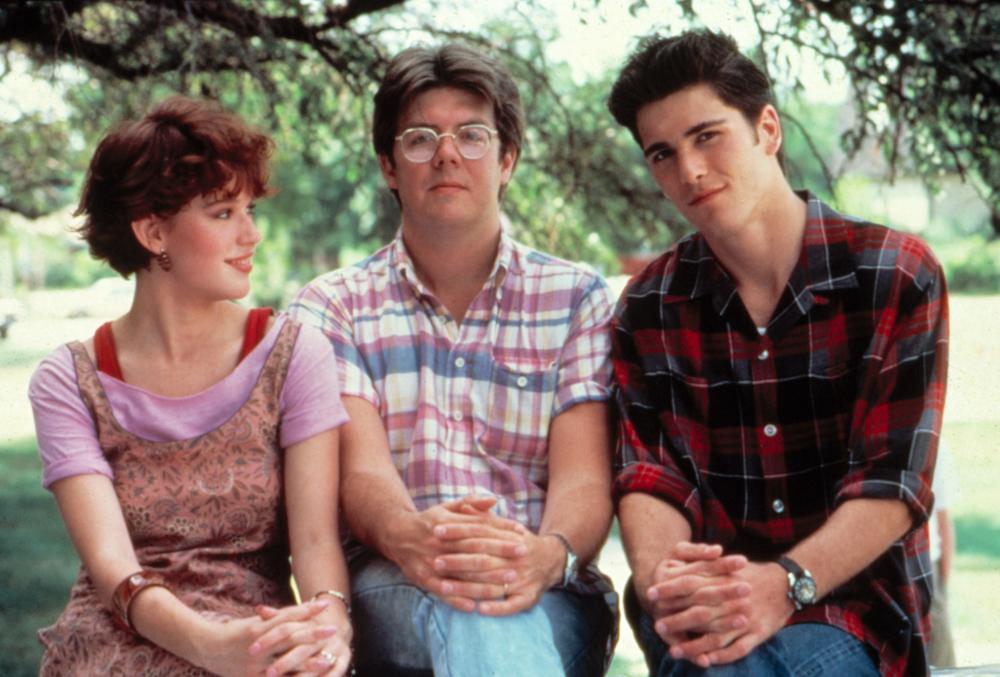
John Hughes attended the University of Arizona but left college around 1969 before graduating to pursue his dream career of writing and comedy. While attending college, Hughes was really into comedy and writing, so he began writing jokes and submitting his comedy writing to National Lampoon where he gained recognition. After leaving college, he worked in advertising, working his way up to become a creative director at Leo Burnett. Hughes later explained how much the Burnett agency helped him become the writer he always wanted to be. In 1982, he became a full writer at National Lampoon and gained experience in order to move on to becoming a screenwriter.3
After gaining recognition through his work for National Lampoon, Hughes continued to write scripts and started writing the script for his first teen movie, Sixteen Candles, in 1982. He wrote the script on the Fourth of July weekend, and wrote the whole thing around actress Molly Ringwald’s face. “He had just moved to ICM and I was at ICM at the time, and they’d given him a stack of headshots, and mine was one of them. For some reason, he picked out my headshot and had it up on his bulletin board, and he wrote ‘Sixteen Candles’ looking at my pictures. So I was literally the inspiration for this character and he didn’t know me at all,” recalls Ringwald.4 He admired how well she represented the realistic teenage girl he was trying to show the world.5 He didn’t like how unrealistic teenage representation was in other teen movies in the 1970’s, so this encouraged him to write about the realistic sides of what it was like to be a teenager in the 1980s. He explains how Ringwald’s character “Sam” and Anthony Michael Hall’s character “The Geek” represented him and his teenage experiences when asked if he was more like Michael Schoeffling’s character “Jake” or “The Geek.” “I was more the geek….There’s a lot of me in her. The way she fits into her family is the way I fit into my family. I know what those feelings are.” 6
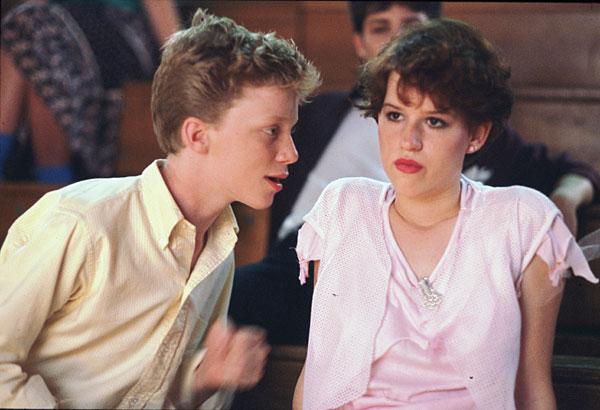
After writing the script for Sixteen Candles, Hughes’ agent sent the script to Ned Tanen, former president of Universal film division, where Tanen then accepted the film under his new production company: Channel Productions. It later secured distribution through Universal Studios and was signed to be directed by John Hughes.7 This ultimately brought the film to life. Hughes’ started casting his actors, which include members of what are known as “The Brat Pack,” the nickname given by the media for actors Hughes mainly loved casting for his films. Actors Anthony Michael Hall as “The Geek,” Michael Schoeffling as “Jake,” Gedde Watanabe as “Long Duk Dong,” and the Cusack siblings as “Geeks.” Molly Ringwald as “Sam” was immediately cast due to the film idea being written around her look and her headshot.
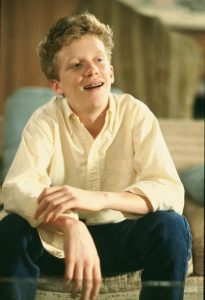
What really sold Hughes to cast Anthony Michael Hall as “the Geek” was how he didn’t represent your typical geek. “Every single kid who came in to read for the part did the whole, stereotyped high school nerd thing… thick glasses, ballpoint pens in the pocket, white socks. But when Michael came in, he played it straight, like a real human being. I knew right at that moment that I’d found my geek,” says Hughes.8 Hughes ultimately saw potential and was impressed by all of his chosen actors and also wanted to make sure his recruitment of actors were all within the age range to the characters portrayed on screen: teenagers.9
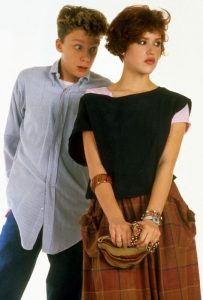
Since these actors were teenagers and were going through the exact same experiences teenagers go through, as portrayed in the film, Molly Ringwald and Anthony Michael Hall actually dated while filming the film for about a year. Though it might sound conflicting, there was actually no drama or any arguments between the two. Not only were they good coworkers, but they were good friends as well.10 Adding onto the “real feel” Hughes wanted to portray within his project, Molly actually picked out all of her outfits for her character “Sam” based on what she personally liked. “I picked out all those clothes. The hat and the layered tops and the dresses. I went to stores on Melrose – can’t remember which ones – with the costume designer and just tried on outfits that I liked.”11
The filming of Sixteen Candles initially began in Chicago, Hughes’ hometown, at Niles East High School in May of 1983.12; Holly Chard, Mainstream Maverick: John Hughes and New Hollywood Cinema (Austin, UNITED STATES: University of Texas Press, 2020), 22.] Other filming locations were mainly in homes along the streets of Chicago and the local church, but actual scenes were mainly filmed on built sets. This, again, helped achieve Hughes’ portrayal of teen suburban life. Compared to other directors, while filming, Hughes was known to make his projects feel real and fun. “He approached everything with excitement. Before he used a monitor, he used to just sit under the camera. During ‘Sixteen Candles’ and ‘Breakfast Club’, all the time, he was under the camera or right by the camera. Most directors just use the video screens. But when I worked with him on those first two movies, he was always so close, so it really felt like he was a part of the scene,” recalls Molly.13 Filming lasted around two months because Hughes had a clear vision and worked quickly. His quick work always sparked criticism from other experts and the media, but Hughes never cared. His desire to make the film more realistic also allowed actors to improvise during filming, which gave the film a real feel. 14

Sixteen Candles officially hit theaters on May 4, 1984. “It’s gonna be such a success because people are gonna be able to relate to the geek and they’re all gonna be able to relate to Samantha, Molly,… there’s something in it for everyone, you know,” says Anthony Michael Hall when being asked about how he feels towards the film.15 The film was a huge success, leading to Hughes’s success and appreciation in Hollywood cinema. This film was popular and loved due to its honest portrayal of teen life. The film did wonders for Molly Ringwald and Anthony Michael Hall and their careers in Hollywood, giving them the title of “teen icons.” This success and recognition of the actors and their work led to the creation of the nickname “The Brat Pack” given by the media because of Hughes’s continuous love of casting actors Molly Ringwald and Anthony Michael Hall in multiple of his movies.16 The themes of awkward crushes, family struggles, teen life, feeling like an outcast, and growing up make the film a classic in teen cinema history.
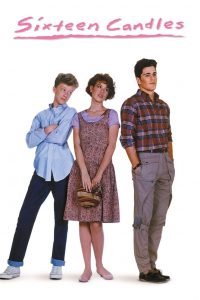
John Hughes’s success with teen movies like Sixteen Candles led to the creation of more successful teen movies like The Breakfast Club (1985), Pretty in Pink (1986), and Ferris Bueller’s Day Off (1986). As quick as his work, Hughes quickly became one of the most influential filmmakers of the 1980s. His ability to capture the realistic teenage experience and add comedy to it made him a defining voice in teen cinema.
- “Filmmaker John Hughes Responding to Critics Who Said He Wrote His Film,” TikTok, accessed 18 March 2025. ↵
- Timothy Shary and Frances Smith, ReFocus: The Films of John Hughes (Edinburgh: Edinburgh University Press, 2021), 4-9. ↵
- Holly Chard, Mainstream Maverick: John Hughes and New Hollywood Cinema (Austin, UNITED STATES: University of Texas Press, 2020), 18. ↵
- Dave Itzkoff, “She Won’t Forget About Him: Molly Ringwald Remembers John Hughes,” ArtsBeat, 1284732013, https://archive.nytimes.com/artsbeat.blogs.nytimes.com/2010/09/17/she-wont-forget-about-him-molly-ringwald-remembers-john-hughes/. ↵
- Timothy Shary and Frances Smith, ReFocus: The Films of John Hughes (Edinburgh: Edinburgh University Press, 2021), 9. ↵
- Writer/Director John Hughes Discussing “Sixteen Candles” in a 1984 Pre… | TikTok’. ↵
- Holly Chard, Mainstream Maverick: John Hughes and New Hollywood Cinema (Austin, UNITED STATES: University of Texas Press,2020), http://ebookcentral.proquest.com/lib/stmarytx-ebooks/detail.action?docID=6340503.19. ↵
- Abbey Bender, “16 Fascinating Facts About the “Sixteen Candles” Cast,” First For Women, 28 March 2024, https://www.firstforwomen.com/entertainment/movies-shows/sixteen-candles-cast. ↵
- Timothy Shary and Frances Smith, ReFocus: The Films of John Hughes (Edinburgh: Edinburgh University Press, 2021), 7, https://doi.org/10.3366/j.ctv1nwbqjf. ↵
- Marielle Wakim, “16 Things You Probably Didn’t Know About Sixteen Candles,” LAmag – Culture, Food, Fashion, News & Los Angeles, 3 July 2014, https://lamag.com/news/16-things-you-probably-didnt-know-about-sixteen-candles. ↵
- The Los Angeles Times, “Now 40, Molly Ringwald Reaches for Different Roles,” The Denver Post (blog), 7 July 2008, https://www.denverpost.com/2008/07/07/now-40-molly-ringwald-reaches-for-different-roles/. ↵
- “Sixteen Candles / Channel Productions, Inc. ; a John Hughes Film,” Produced by Hilton A. Green ; Written and Directed by John Hughes, 1 January 2003 ↵
- Dave Itzkoff, “She Won’t Forget About Him: Molly Ringwald Remembers John Hughes,” ArtsBeat, 1284732013, https://archive.nytimes.com/artsbeat.blogs.nytimes.com/2010/09/17/she-wont-forget-about-him-molly-ringwald-remembers-john-hughes/. ↵
- “Filmmaker John Hughes Responding to Critics Who Said He Wrote His Film,” TikTok, accessed 18 March 2025. ↵
- Anthony Michael Hall for ‘Sixteen Candles’ 4/14/84 – Bobbie Wygant Archive, 2020, https://www.youtube.com/watch?v=FcNBpG4Rbzc. ↵
- Holly Chard, Mainstream Maverick: John Hughes and New Hollywood Cinema (Austin, UNITED STATES: University of Texas Press, 2020), http://ebookcentral.proquest.com/lib/stmarytx-ebooks/detail.action?docID=6340503.17. ↵
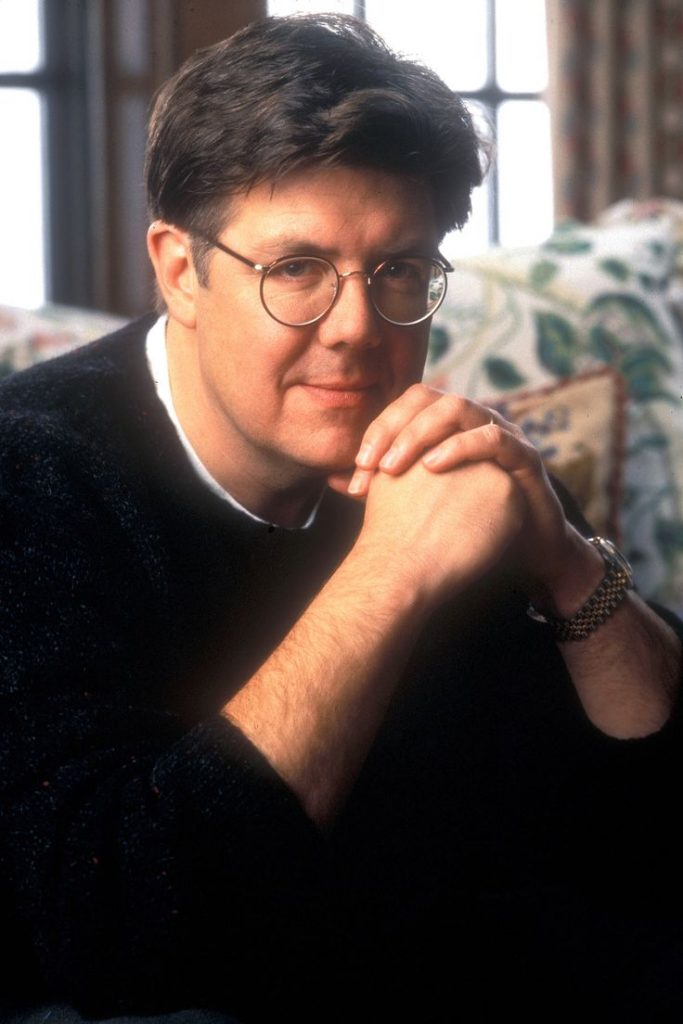



7 comments
Amrie Cortez
This article was awesome! I thought it was cool how John Hughes wrote an entire script after seeing Molly Ringwald! I like how he captures that real teenage feeling even though it is a movie. I was amazed on how he let Molly Ringwald pick out her own wardrobe for her character “Sam” in Sixteen Candles and how he immediately knew who his “Geek” was for the movie.
Alejandro Rubio Chappell
This article does a great job showing how John Hughes wasn’t just writing teen movies—he was reshaping how we saw teen life on screen. His passion for portraying teenagers as real, complex people made Sixteen Candles stand out. I especially liked learning how personal and intuitive his process was, from writing around Molly Ringwald’s photo to letting actors improvise. It makes the film feel even more genuine and timeless.
rmanzur
his article gave such an insightful look into John Hughes’ creative process and how Sixteen Candles came to life. I loved learning how Molly Ringwald’s photo inspired an entire script it really shows the power of vision and storytelling. The behind-the-scenes details made the film feel even more meaningful. Great job connecting the personal to the cinematic!
Carlos Flores
This was a super interesting read! I loved how you showed John Hughes’ unique writing process and how much thought he put into making Sixteen Candles feel real. It’s cool how Molly Ringwald inspired the whole movie just from a headshot. You did a great job explaining how the cast and Hughes made everything feel so relatable and genuine.
TJ
I really enjoyed reading about how John Hughes approached Sixteen Candles and his process behind making it. It was interesting to learn how he was inspired by Molly Ringwald’s headshot, and how that led to him writing the script so quickly. I also liked hearing about how Hughes’ fast writing style helped keep the dialogue natural and relatable. The fact that he allowed his actors to improvise made the film feel more real. The article really helped me understand how Hughes’ personal experiences influenced his characters and themes, making it one of the most iconic teen films of the ’80s.
Micaella Sanchez
This was a good article. I had no idea he wrote it just based on Molly Ringwald’s face. It is such an interesting thing to hear about movies and how they are made and hearing him say it only took him two day to write the story is so insightful because for me I thought it would take a whole team and month and months of work to write something like that special from a teenage perspective I feel like to do that you have to channel a teen to get it entirely right. t
Meadow Ayala
This was such an inspiring read! I loved seeing how much heart and thought John Hughes put into Sixteen Candles — it wasn’t just about making another teen movie, it was about making something real and relatable. I didn’t realize how much of his own experiences were reflected in the characters, or how much trust he gave the actors to bring the story to life. It’s amazing how his quick, instinctive writing style and personal touches made a film that still feels honest decades later. Hughes really captured what it felt like to be a teenager, and that’s why his work still means so much today.